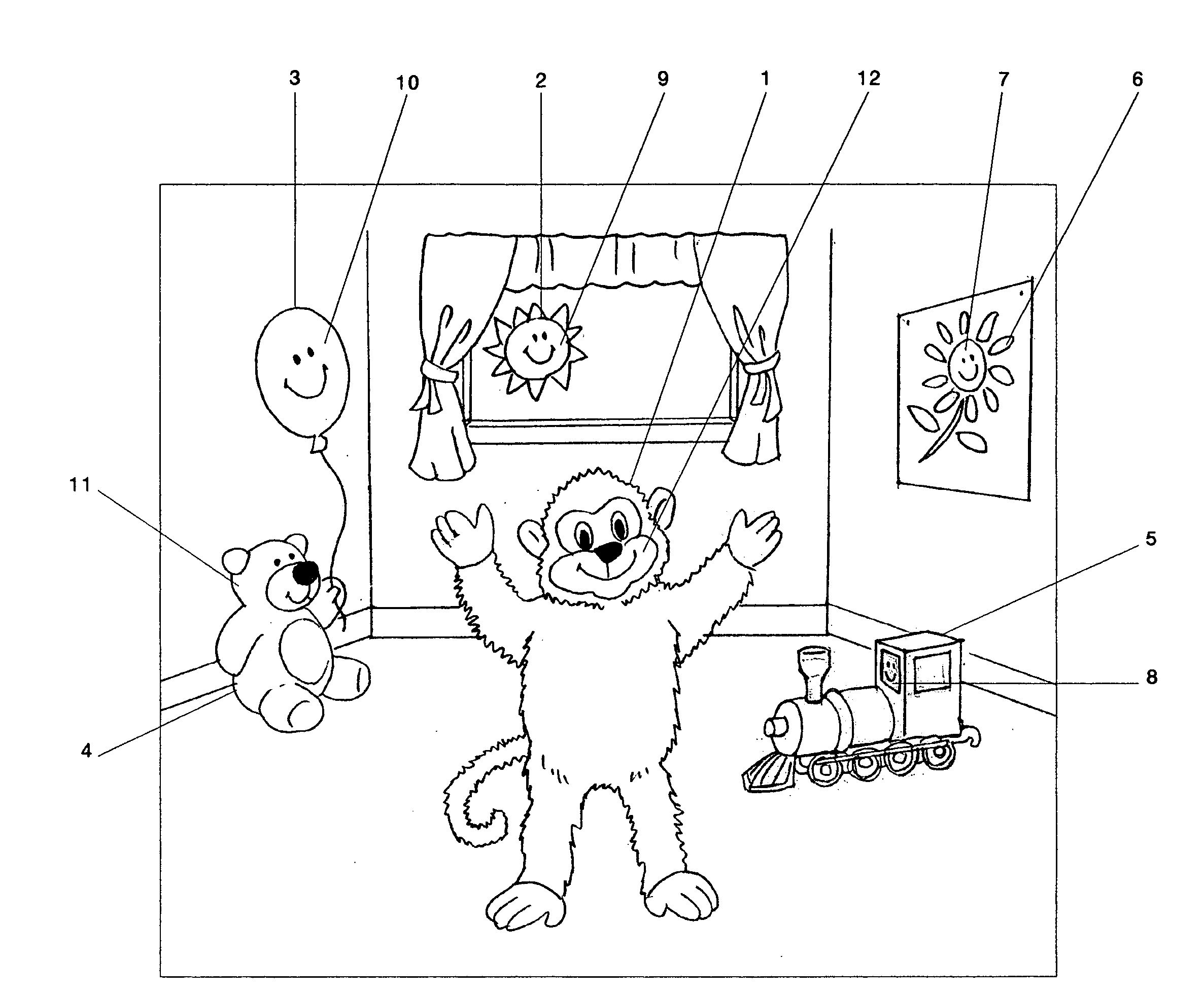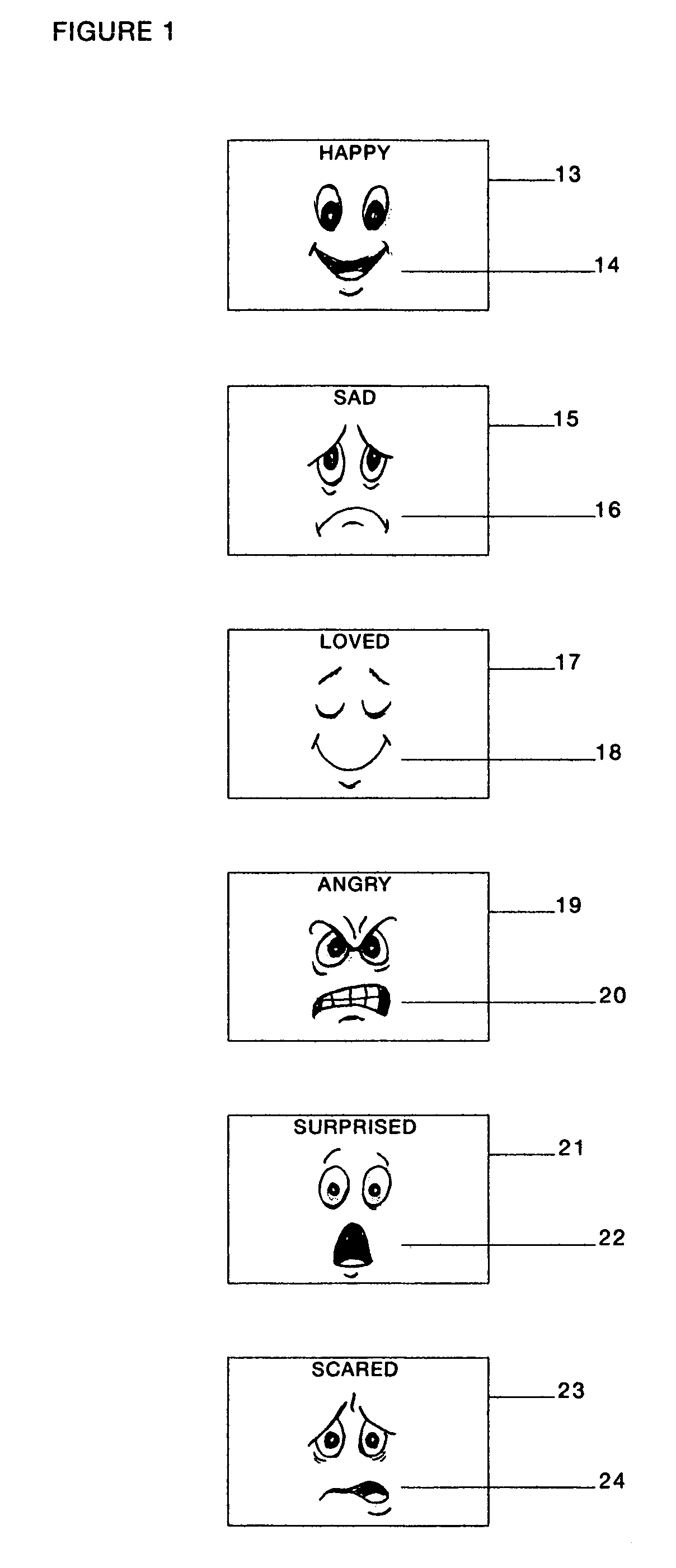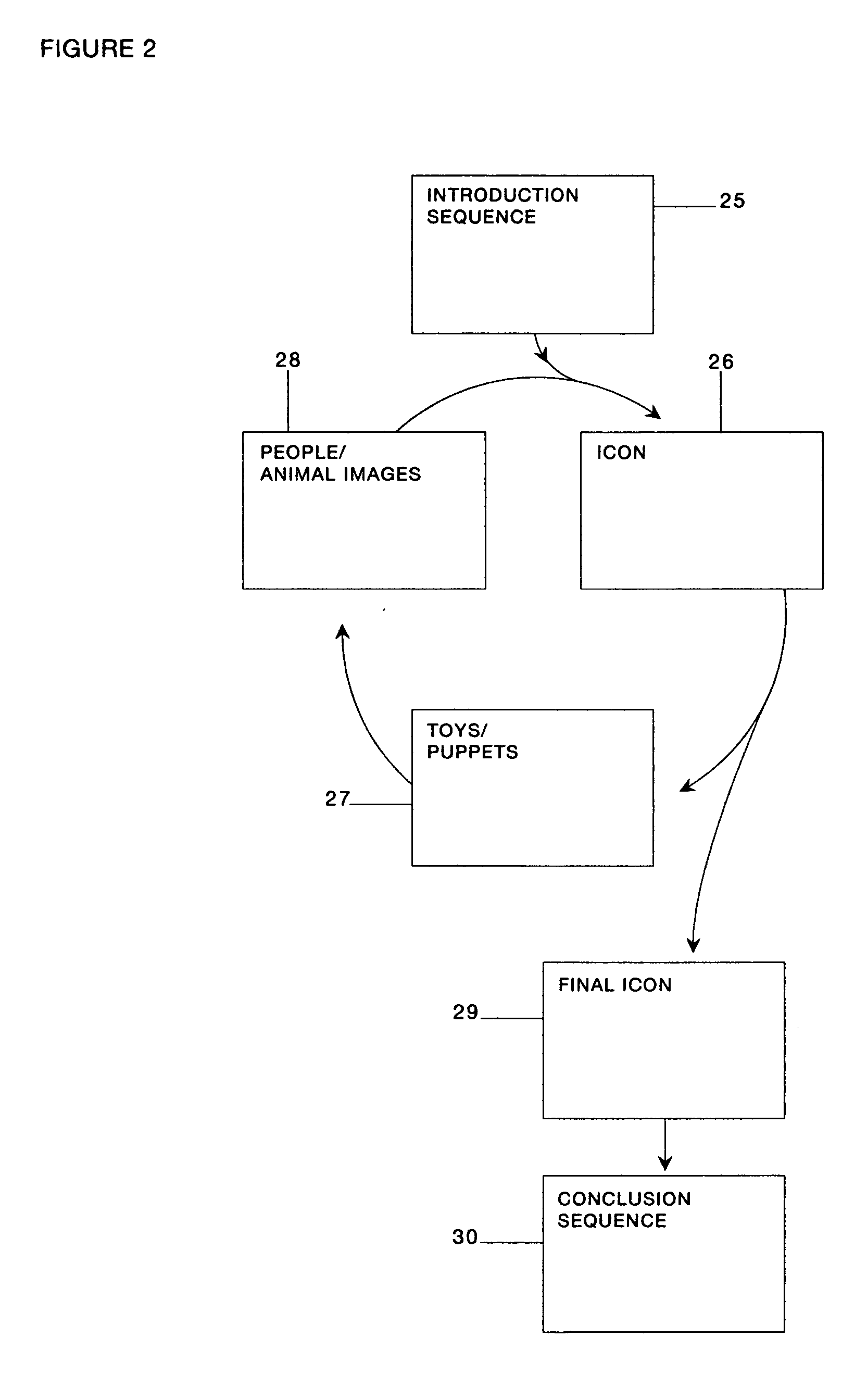Method for improving the emotional quotient in infants and children
- Summary
- Abstract
- Description
- Claims
- Application Information
AI Technical Summary
Benefits of technology
Problems solved by technology
Method used
Image
Examples
Embodiment Construction
[0043] The preferred embodiment of the invention envisions a video that is stored on a recordable media. This video includes any combination of sight and sound that can be stored on some kind of recordable media. The recordable media can be a VHS tape, a DVD, a MPEG or other electronic format. The invention is not limited to any given recordable media. The video is shown on some kind of display. The preferred embodiment envisions a television or computer screen, but the invention is not limited to any particular display. For most recordable media, the video will also require a player. For example, a VHS tape will require a VHS player. A DVD disk will require a DVD player. Other electronic formats, like MPEG, the player is integrated into the display, in this case a computer. The invention is not limited to any particular format of recordable media and thus not limited to any particular kind of display or limited to the presence or absence of a player for that media.
[0044] In the pr...
PUM
 Login to View More
Login to View More Abstract
Description
Claims
Application Information
 Login to View More
Login to View More - R&D
- Intellectual Property
- Life Sciences
- Materials
- Tech Scout
- Unparalleled Data Quality
- Higher Quality Content
- 60% Fewer Hallucinations
Browse by: Latest US Patents, China's latest patents, Technical Efficacy Thesaurus, Application Domain, Technology Topic, Popular Technical Reports.
© 2025 PatSnap. All rights reserved.Legal|Privacy policy|Modern Slavery Act Transparency Statement|Sitemap|About US| Contact US: help@patsnap.com



